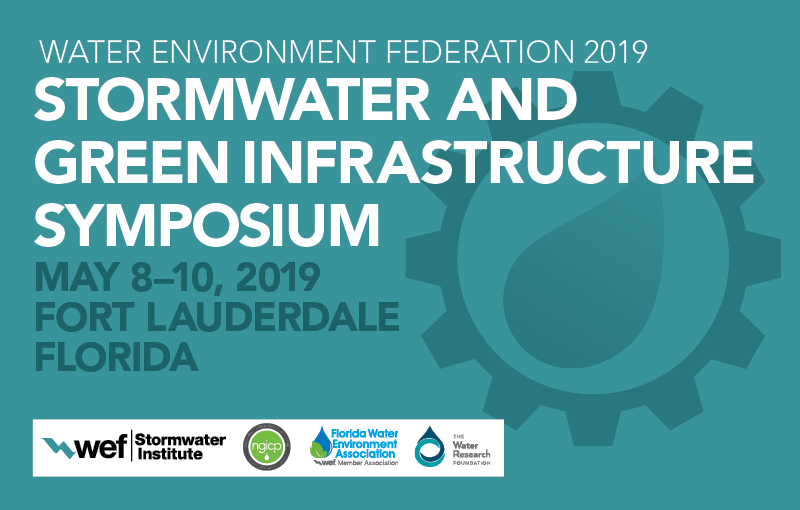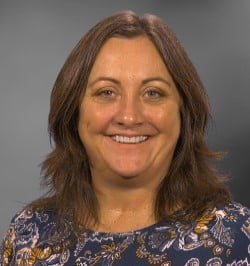Michael D. DeVuono and Leigh Padgitt, co-chairs of the WEF Stormwater and Green Infrastructure Symposium, blog about this exciting inaugural event.
Green stormwater infrastructure (GSI) is a nature-based approach to managing the effects of stormwater runoff. Whether you reside in an older city battling combined sewer overflows during extreme weather events, or in a municipality with drought-stricken uplands, mimicking the natural hydrologic process by capturing, filtering, infiltrating, and slowly releasing runoff is the way to go.
Many are familiar with the phrases: stormwater runoff, municipal separate storm sewer or MS4, combined sewer overflow, stormwater permit… several of us know the depths of earth we must probe to find the never-ending bottom of the phrase "maximum extent practicable." Regulators; regulated. Builders; planners. Interested public.
Stormwater runoff is one of the main contributors to water pollution across the United States. What’s at stake is clean water: for drinking, fishing and swimming; for humans and for wildlife; in the desert for augmenting supply and other climates for safe conveyance downstream.
Development of the natural landscape is to be expected, requiring permitting and compliance strategies. Yet the beneficial use of rainwater during its fall and eventual runoff remain optional in many jurisdictions. Green stormwater infrastructure values rainwater as a resource instead of a waste product. Strategies strive to slow the runoff down, infiltrate it into the ground, promote evapotranspiration, filter pollutants (or, better yet, prevent runoff from being polluted in the first place).
In the West, we have strict water rights for downstream users – a use here for a trade-off there. In many parts of the nation, municipalities will give it away – please, take this water and do something (productive) with it; which brings us to this: the Inaugural Stormwater and Green Infrastructure Symposium.
The Inaugural Stormwater and Green Infrastructure Symposium presented by the Water Environment Federation brings the leading industry professionals to Fort Lauderdale, Fla., for a technical program featuring topics on regulatory requirements, asset management, innovative technology solutions, financial considerations,and more. The four-day event includes:
- A pre-conference Special Seminar focused on advancing green infrastructure practice through life cycle cost and co-benefit analysis (Tuesday, May 7);
- Three pre-conference workshops on Wednesday, May 8 (watershed management optimization support tool, redrawing grey cities to climate resilient sponge cities, and water quality workforce: a national crisis or opportunity)
- And a full conference program featuring the Opening General Session and Keynote Address, followed by 15 educational sessions conducted over two days (Thursday and Friday, May 9-10).
If you’d like to know more, view the program. Register for the conference, a workshop, or both! Reserve your room and make your travel plans! Join us, because WATER IS WORTH IT!



 Michael D. DeVuono is a professional engineer with more than 20 years of experience in the civil engineering and land development industries. Michael assists both public- and private-sector clients with the design and implementation of sustainable stormwater practices, low-impact development and green infrastructure. Most recently, Michael has been assisting with the engineering design of Green Stormwater Infrastructure in conjunction with Green City Clean Waters, an initiative of the Philadelphia Water Department that seeks to meet EPA-mandated water quality standards.
Michael D. DeVuono is a professional engineer with more than 20 years of experience in the civil engineering and land development industries. Michael assists both public- and private-sector clients with the design and implementation of sustainable stormwater practices, low-impact development and green infrastructure. Most recently, Michael has been assisting with the engineering design of Green Stormwater Infrastructure in conjunction with Green City Clean Waters, an initiative of the Philadelphia Water Department that seeks to meet EPA-mandated water quality standards. Leigh Padgitt, CPMSM, NGICP, is a unit manager at the Arizona Department of Environmental Quality. Leigh has been in the field of stormwater permitting, compliance and program management since 2004, all within the state of Arizona. Unique challenges include monsoon and drought, too much rain then not enough. The past four years she has been studying the implementation of and challenges with green stormwater infrastructure (GSI). Projects she has led or been part of a core team include the technical details and standards handbook, effectiveness study of implemented features, feasibility study for restoration using GSI, and cost benefit and triple bottom line analysis. Last summer she attended the National Green Infrastructure Certification Program, became certified and decided to view GSI as a potential career track (should the right opportunity arise!).
Leigh Padgitt, CPMSM, NGICP, is a unit manager at the Arizona Department of Environmental Quality. Leigh has been in the field of stormwater permitting, compliance and program management since 2004, all within the state of Arizona. Unique challenges include monsoon and drought, too much rain then not enough. The past four years she has been studying the implementation of and challenges with green stormwater infrastructure (GSI). Projects she has led or been part of a core team include the technical details and standards handbook, effectiveness study of implemented features, feasibility study for restoration using GSI, and cost benefit and triple bottom line analysis. Last summer she attended the National Green Infrastructure Certification Program, became certified and decided to view GSI as a potential career track (should the right opportunity arise!).